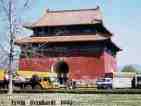Home
Hungary
Cardinal József Mindszenty
1956 Hungarian Revolution (My Story)
(My Eyewitness story of our Freedomfight
and Resistance against the Soviet Invasion)
50th Anniversary of our Freedomfight
My Travel and Photos Pages
Africa
America - North
America - Central
America - South
Asia
Australia
Oceania
My China pages directory
Beijing or Peking
Beijing Buses
Beijing - Forbidden City
Beijing - Prince Gong Palace
Beijing - Summer Palace
Great Wall of China
Guangzhou or Canton
Guangzhou Buses
Guangzhou trains
Hong Kong
Hong Kong Airport
Hong Kong Buses
Hong Kong - Lantau Island
Kashgar or Kashi
Kashgar Buses
Kashgar Sunday Market
Macau
Ming Dynasty Tombs
Peking Man's Caves/Zhoukoudian
Shanghai
Shanghai Buses
Shanghai Maglev / Transrapid
Shanghai Metro
Shenzhen
Shenzhen Buses
Tibet
Tibet - Lhasa
Tibet - Lhasa Monasteries
Tibet - Lhasa - Potala
Turpan or Tulufan
Turpan - Amin Mosque
Turpan - Astana Graves
Turpan - Bezeklik Caves
Turpan - Crescent Moon Lake
Turpan - Dunhuang Caves
Turpan - Echoing-Sand Mountain
Turpan - Ediqut Ruins
Turpan - Emin Minaret
Turpan - Flaming Mountains
Turpan - Gaochang Ruins
Turpan - Grape Valley
Turpan - Green Mosque
Turpan - Jesus Sutras
Turpan - Jiaohe Ruins
Turpan - Karez System
Turpan - Maza Village
Turpan - Mogao Caves
Urumchi or Urumuchi
Xian
Xian Buses
Xian - Hua Qing Pool
Xian - Silk Factory
Xian - Silk Road Monuments
Xian - Terracotta Factory
Xian - Terracotta Army Museum
Yanan
Yanan Buses
Yanan Cave Dwellings
|

China facts & history in brief
 My China pages directory
My China pages directory
Map of China
Ming Dynasty Tombs
Excerpted from Wikipedia, the free encyclopedia
The Ming Dynasty Tombs are located some 50 kilometers
due North of Beijing at an especially selected site.
The site was chosen by the third Ming Dynasty emperor
Yongle (1402 - 1424), who moved the capital
of China from Nanjing to the present location of Beijing.
He is credited with envisioning the layout of the ancient
city of Beijing as well as a number of
landmarks and monuments located therein.
After the construction of the Imperial Palace
(the Forbidden City) in 1420, the Yongle Emperor selected
his burial site and creating his own mausoleum.

For a more information about
Ming Tombs see Wikipedia, the free encyclopedia

This page was retrieved and condensed from
(http://en.wikipedia.org/wiki/Ming_Tombs)
see Wikipedia, the free encyclopedia, November 2007.
All text is available under the terms of the
GNU Free Documentation License
(see
Copyrights for details).
About Wikipedia
Disclaimers

This information was correct in November 2007. E. & O.E.

The Ming Dynasty Tombs' approaches begin
in the beautiful valley,
the seven kilometre 'spirit way' at a
triumphal arch and the Red Gate and
passes the giant tortoise and 12 sets
of giant stone animals.
Every second one is in a reclining
position, legend has it, to allow
for a 'changing the guard' at midnight.
Further on are 12 stone-faced human
statues of generals, ministers and
officials, each distinguishable
by the headgear, than the
Dragon and Phoenix Gate.
The tombs look much like a bank vault
and held the body of an emperor, his
wives and girlfriends, and funerary treasures.
Dingling is the only tomb excavated
at Shisanling although 13 of the
16 Ming emperors are buried in the
40-square-kilometre area.
Dingling, the tomb of Emperor Wan Li
( 1573-1620), is the second-largest tomb.
Over six years the emperor used a
half-million workers and a heap
of silver to build his necropolis
and then held a wild party inside
the completed chambers.
It was excavated between 1956 and 1958.
The underground construction covers
1195 square metres, is built entirely
of stone, and is sealed
with an unusual lock stone.
The tomb yielded up 26 lacquered
trunks of funerary objects,
some of which are displayed onsite;
others have been removed to Beijing
museums and replaced with copies.
The other tombs, such as Changling, can
be viewed from the exterior, it was
started in 1409 and took 18 years to
complete, is the tomb of Emperor Tong Le
and 16 of his concubines were buried
alive with his corpse.
Wan Li and his royal spouses were
buried in double coffins surrounded
by chunks of uncut jade.
The jade was thought to have
the power to preserve the dead.
The tombs lie 50 kilometres
north-west of Beijing.
Author

We thoroughly enjoyed our
sojourn at the Ming Dynasty Tombs.
My son, Endre, and I have mounted
many of the giant animals.
It's OK. It's the right thing to do.
As a matter of fact we were told
by the guide that it is lucky to mount
the giants.
We also encountered a filmcrew,
busy filming the approaches and
performing some Kung Fu action.
Awesome.

1997
You can click on these photos for an enlargement.
 |
 |
| Ming Dynasty Tombs |
Ming Dynasty Tombs |
 |